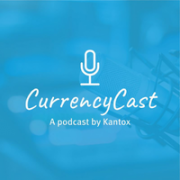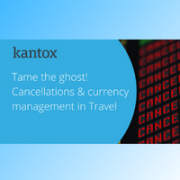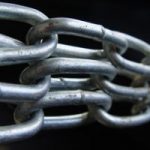The IT Savvy Treasurer
| 9-5-2017 | Patrick Kunz |

We cannot switch on the news without hearing about technological advancements which, supposedly, make our lives easier, better or smarter. We all embrace these, get used to them and cannot do without them anymore. Sometimes we think back to the time before these advancements and cannot image how we lived without them. The same applies to treasury.
I am 35 years old; my experience in treasury was always linked to IT. I sometimes hear stories from older treasurer who worked without computers, later tabulating/punch cards and still managed to do a good job in their field. Of course times have changed; information is faster than in these days and also the need to process it. We all had to embrace the new technology. In this blog I will try to analyse the link between IT and treasury and try to make predictions about the future or at least where I wish the future would go (in treasury terms).
Payments
In the old days payments were a manual process with people entering them in the banking system or sending them to the bank via fax. Nowadays, we link our ERP system with the banking system and have a batch file automatically added to the bank. With bulk payments a payment hub can be used which will make the whole process bank independent, fast and cheap. If wanted and needed the whole process can be made straight-through by automating it from creating a payment to approving it.
The future will make payments even faster (instant payments should be possible in the sepa region from November onwards), cheaper and more bank independent (PSD2 regulation allows non banks to link with your bank and provide (payment) services). Maybe we will be using our facebook account for payments sooner or later. Bitcoin could be an alternative payment currency and/or be used to hedge non deliverable currencies (to achieve this the volumes need to increase significantly).
Risk management
An important part of the treasurers work is risk management. Hedging FX, interest rate, commodity prices are daily business for a treasurer. Doing the deal is easy, doing the right deal is more difficult. A treasurer can only hedge correctly if he knows what he is hedging: the exposure. To know the exposure information of the business is key. The reason for the exposure originates in sales (FX) or procurement (FX and Commodity). These departments need to be aware that the actions they take might have consequences for the treasurer and therefore the treasurer needs to have some information. I have been at companies where sales was daily generating a lot of USD exposure at a EUR company. They were supposed to let finance know about positions. Often this was done at day’s end or forgotten and done a day later. Result: an exposure on USD without the treasurer knowing it; a risky position. IT helped to fix this. Sales entered a deal in a program and the relevant FX exposure was automatically shared with the treasurer via an API to the Treasury Management System. The treasurer could decide directly whether he needed to hedge or not and even aggregated deals to get better rates at the bank. For small deals a link was set up with a FX trading platform to STP them at the best rate.
The future in risk management will be even more automation within the company (internal) but also with connections to banks and risk solution providers. Prices are becoming more transparent due to the fact that bank independent solutions are available which compare prices, in real time. Risk management sales is becoming less a bank business. Brokers are having less hurdles to enter the market, due to IT platforms in the cloud. Why pick up the phone and call your bank for a EUR/USD quote when you can compare prices via an online platform and directly trade it? Often you don’t even have to settle via your own bank accounts but you can have it directly sent to your customer or supplier.
For Trade Finance blockchain will become the new standard. The financing and shipping of commodities is a rather paper based process which is inefficient and slow. Blockchain could automate and improve the speed massively. The challenge to achieve this is big as there are many parties involved, but initiatives have started so the future is beginning now.
Information
As above examples show information is key to a treasurer. Even more so, as treasury is often a small team and most of the information comes from other departments. To get this information the treasurer can use several nice IT solutions. The ERP systems helps, but the treasury needs to know where to find the information. A treasury management system is often used to sort all treasury related information. TMS can link with ERP systems or other systems to gather information. The TMS will sort this information so that the treasurer is well informed and can make decisions. When I started in treasury 10 years ago the market for TMS was small; systems were expensive and limited in use (payments only, fx only etc). Nowadays a TMS does not have to be expensive anymore. A SME (Small medium enterprise) could use it to upgrade their treasury information. Most TMS can be used for all aspects of treasury (cash Management, risk management, corporate finance, guarantees etc). This will give the tech savvy treasurer an edge. The treasurer with most information can make the best decision. In treasury taking decisions while being well-informed often means either costs saving (e.g. better cash position, lower working capital) or lower risk. The IT savvy treasurer contributes to an optimally functioning company; he/she should be considered a business partner; he knows your cash position, your risk position and your balance sheet, hopefully in real time at all times.

Treasury, Finance & Risk Consultant/ Owner Pecunia Treasury & Finance BV
Other articles of this author:
Flex Treasurer: The life of an interim treasurer
How much are you paying your bank?











